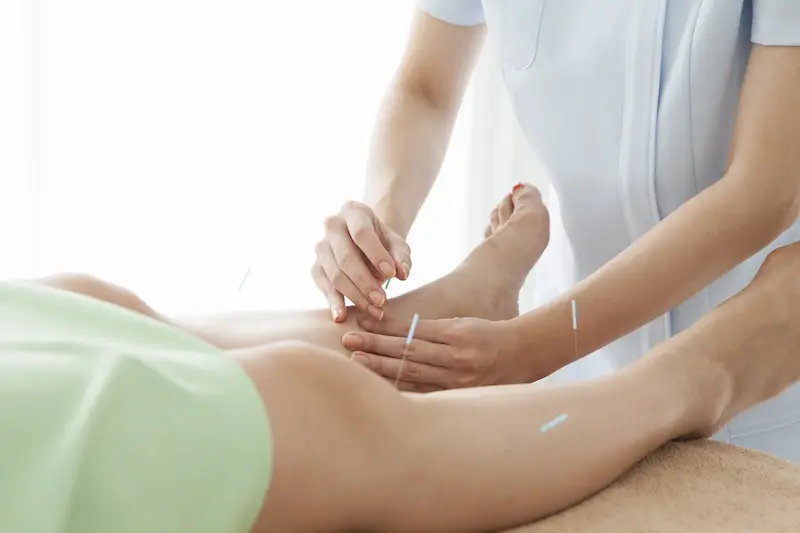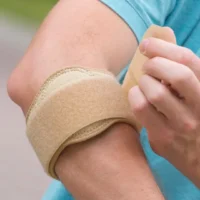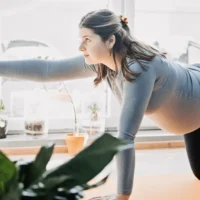Both Acupuncture and Dry Needling involve the insertion of a filiform stainless-steel needle through the skin to alleviate pain, but are they different and if so, how?
Let’s begin by having a brief look at the two modalities:
| Acupuncture | Dry Needling |
| Originated in China about 6000 BCE. Based on the theory of meridians, Qi, Yin/Yang and 5 elements (fire, water, wind, earth, metal) and aims in restoring balance. The knowledge of health and disease in China developed purely from observation of living subjects because dissection was forbidden and the subject of anatomy did not exist | Origins are from western medicine based in scientific principles. It aims at improving function by releasing myofascial trigger points (tender points) Came about by using hypodermic needle (used to draw blood) to decrease pain, and came about by experiment of injecting saline into muscles |
| Needle placement follows the meridians of the body and will not necessarily be placed in the area of pain. There are 12 meridians with a connection to internal organs | Needle placement is in the region of pain, trigger points in muscle, tendon and fascia |
| Used in the management of a broad range of conditions, including pain, menstrual issues, infertility, gastric complaints and more. | Used to treat musculoskeletal conditions and dysfunction |
| Used in daily practice by TCM practitioners as a primary modality, commonly the only technique | Used as a supplementary tool in some treatments |
| Minimum 4-year bachelor’s degree with 100s hour supervised clinical experience | Usually a 48-72-hour course with minimal supervised clinical experience |
| Must be registered through a Chinese Medical Board and Australian Health Practitioner Regulation Agency. | No regulatory body needed – although usually completed as an adjunction therapy |
| Must complete mandatory continued professional development for registration | No required continued professional development |
| Professional indemnity insurance is compulsory | May not be covered by professional indemnity insurance |
Now that you have a brief overview, let’s do a deep-dive into the history and philosophy of each approach to gain a better understanding of the difference between Acupuncture and Dry Needling.
Dry Needling:
Dry Needling (DN) is described as “the insertion of needles into tender point in the body without the injection of any substance to treat painful musculoskeletal disorders”(1) and was tied to the discovery of myofascial tender points and pain referral patterns.
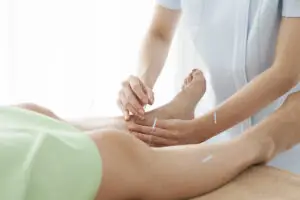
History:
It began in the late 1930’s with John Kellgren who was the first to publish that pain from muscles if often referred in a specific pattern to the individual muscle, and that pain could be relieved by injecting procaine into an acutely tender point which were often some distance from the site of pain outlasting the effects of anaesthetic(2).
Over the next few years, an interest in pain relief from needling grew with many people experimenting with tender points, but it wasn’t until 1942 that Janet Travell and David Simmons’s research that Myofascial Trigger Points became a common term. Myofascial Trigger Points are defined as an “hyperirritable spot in skeletal muscle that is associated with a palpable nodule in a taut band. The spot is tender when pressed and can give rise to characteristic referred pain, motor dysfunction and autonomic phenomena”(1).
Needling without injection of a substance was first mentioned by Ernest Brav and Henry Sigmond in 1941 who proclaimed that pain could be relieved by simple needling without injecting anything, however the first sentence of their paper references a James Churchill’s publication on acupuncture from 1821(3, 4). The term ‘Dry Needling’ was coined in 1947 by J D Paulett who also established the relationship of effective treatment, deep needling, tender points and a reflex spasm (fasciculation/muscle twitch) (5). This was built upon by Karel Lewit in 1979 who stated that acupuncture needles had the same therapeutic results with less pain, bleeding and bruising then hypodermic needles(1).
This is how DN that is known today came about, with the use of acupuncture needles and the insertion and manipulation of the needle that creates a fasciculation to help reduce pain in musculoskeletal complaints.
Acupuncture:
Acupuncture is a key component of Traditional Chinese Medicine (TCM) to help balance the flow of energy known as qi (chi) which flows through medians in your body. By inserting filiform needles through a person’s skin at specific points along these meridians, to various depths, acupuncture practitioners believe that your energy flow will re-balance(6). Other methods may be used to stimulate the acupuncture points, including acupressure, moxibustion, cupping, laser therapy, electro-stimulation and massage, in order to rebalance the flow of qi(7).
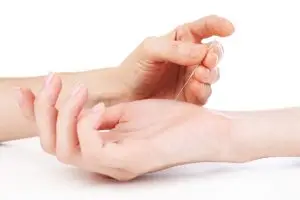
History:
Acupuncture is generally held to have originated in China, with instruments dating back to 6000 BCE being interpreted as acupuncture treatment(8), however this is widely debated.
1600-1046 BCE the Shang Dynasty linked Chinese medicine to the beliefs of ancestors, who were capable of endangering or even destroying human life, therefore healing practices attempted to restore not only the living but also the dead. This belief gave way to magical, demonological or supernatural beliefs, that demons caused disease such as swellings, and the insertion of needles or stone lancets etc., could be to kill or expel them(9). Meridians were first mentioned in 198 BCE in writings found in Ma-Wang-Dui tomb(8), however they differ from the ones commonly seen in TCM today.
The Huangdi Neijing (The Yellow Emperor’s Classic of Internal Medicine) is an antediluvian text on health and disease with an organised system of diagnosis and treatment. It is thought to be written in approximately 2600 BC by Emperor Huangdi. It is presented in the form of questions by the Emperor and learned replies from his ministers and is likely to be an accumulation of traditions handed down over centuries presented in terms of the prevailing Taoist philosophy. By this time the concept of meridians in which the Qi (energy/lifeforce) was established the precise anatomical locations of acupuncture point developed later(8, 10).
During the Han Dynasty (202 BCE – 220 CE) Chinese medical traditions flourished as Chinese health care started to follow theories to categorise phenomena into a limited number of causes and effects. Natural laws, conceptualised in doctrines such as ‘Yin‐yang’ and ‘Five elements (fire, water, wind, earth, metal),’ were used to explain health and disease, and to devise preventive and therapeutic strategies(9). However, these theories were not commonly accepted or consistent.
The development of acupuncture and the accumulation in texts over the next centuries gradually made acupuncture one of the standard therapies used in China, alongside herbs, massage, diet and moxibustion (heat)(8). Bronze statues from the 15th century show the acupuncture points, and were used for teaching and examination purposes(8). During the Ming Dynasty (1368–1644 CE), The Great Compendium of Acupuncture and Moxibustion was published, which forms the basis of modern acupuncture, in which clear descriptions of the full set (365 points) that represent meridian apertures in which Qi could be accessed via a needle. These points are still points used in modern acupuncture.
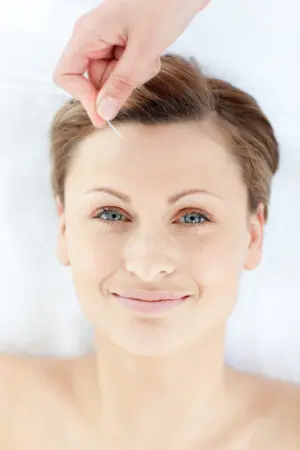
Several of our team practice Dry Needling for musculoskeletal complaints, including Teille, Amy, and Yahana. If you are interested in learning more about the various needling approaches, and which style might be best for you see Dr. Teille Wickstein. She is our go-to practitioner for all things needling related! You can read more about her below.
Author Bio:

Dr Teille Wickstein is a dual-qualified Osteopath and Acupuncturist. She first obtained a degree in Chinese Medicine/Acupuncture, before undertaking a further 5 years of University training to become an Osteopath. Teille (pronounced “Teal”) is passionate about improving health and wellbeing, and truly believes in the holistic approach of treating the body as one unit.
- Teille has an interest in treating both acute and chronic conditions through osteopathic treatment .
- Teille uses a variety of different treatment techniques, from myofascial release to manipulation.
- She aims to provide her patients with the knowledge required to not only treat their pain, but to understand it and subsequently prevent it using postural advice, ergonomic advice and strengthening techniques.
Teille is available for consultations from Tuesday – Saturday. She offers late afternoon and evening appointments.
For more information or to make an appointment call (02) 4655 5588 or click here to book an appointment now.
References:
1. Legge D. A History of Dry Needling. Journal of Musculoskeletal Pain. 2014;22.
2. Kellgren JH. Referred Pains from Muscle. Br Med J. 1938;1(4023):325-7.
3. Lu DP, Lu GP. An Historical Review and Perspective on the Impact of Acupuncture on U.S. Medicine and Society. Med Acupunct. 2013;25(5):311-6.
4. Brav EA, Sigmond H. Low Back Pain and the Needle. The Military Surgeon. 1942;90(5):545-9.
5. Paulett JD. Low Back Pain. The Lancet. 1947;250(6469):272-6.
6. Clinic M. Acupuncture: Mayo Clinic; 2017 [updated March 2020. Available from: https://www.mayoclinic.org/tests-procedures/acupuncture/about/pac-20392763.
7. AACMA. Acupuncture 2020 [Available from: acupuncture.org.au/acupuncture-and-chinese-medicine/acupuncture/.
8. White A, Ernst E. A brief history of acupuncture. Rheumatology. 2004;43(5):662-3.
9. Ramey D, Buell PD. A true history of acupuncture. Focus on Alternative and Complementary Therapies. 2004;9(4):269-73.
10. Curran J. The Yellow Emperor’s Classic of Internal Medicine. BMJ : British Medical Journal. 2008;336(7647):777-.

